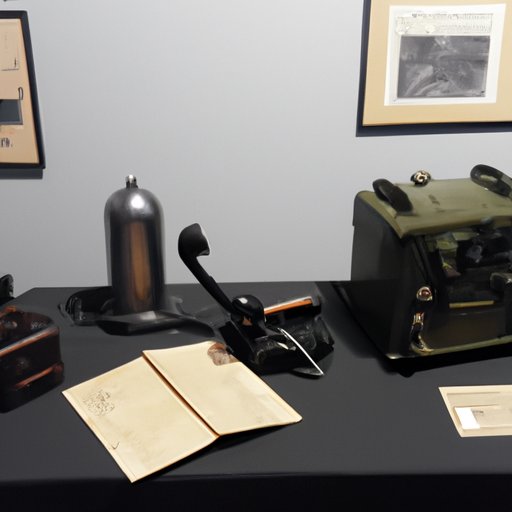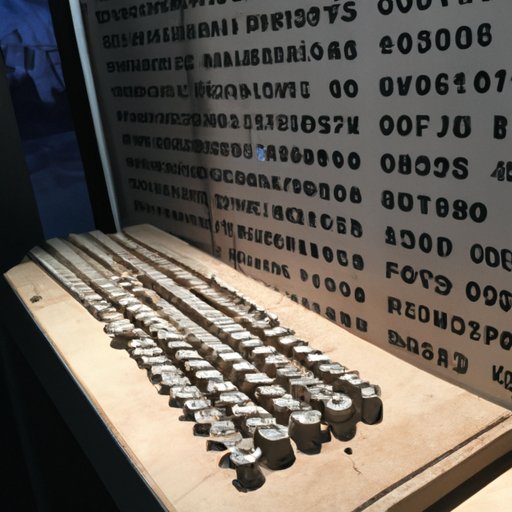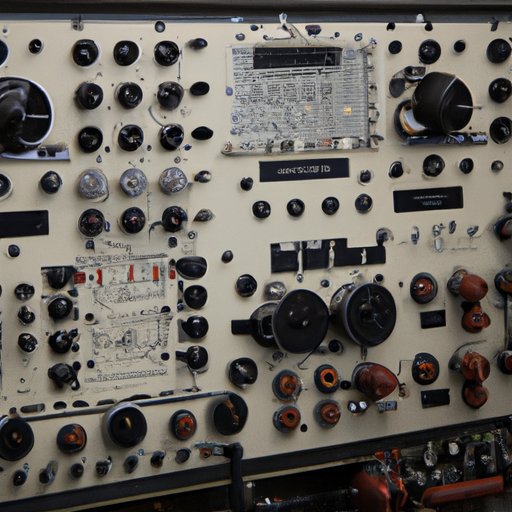Introduction
World War II was a global conflict that stretched from 1939 to 1945 and involved most of the world’s major powers. During this time, there were numerous technological advancements made by all sides, which had a dramatic effect on the outcome of the war. In this article, we will explore some of the major technological advances used during WW2 and their impact on the war.
The Role of Technology in the Outcome of WW2
One of the most important technological advances to come out of WW2 was the development of radar and sonar. These systems allowed for the detection and tracking of enemy vessels, planes, and submarines, allowing allied forces to gain an edge in the war. Radar and sonar also enabled the Allies to launch successful bombing campaigns against land targets, as they could accurately track their locations.
In addition to radar and sonar, tanks, aircraft, and submarines played a major role in the war. Tanks provided mobile firepower on the battlefield, while aircraft and submarines gave naval forces the ability to strike at targets far away from the frontlines. All of these technologies allowed the Allied forces to gain an edge over the Axis powers, ultimately leading to their victory.

Communications Technology Evolution During WW2
Communications technology also played an important role in WW2. The telegraph was one of the primary methods of communication used during the war, as it allowed for the rapid transmission of messages between military units. However, the telegraph was limited in its range and was vulnerable to interception, so radios soon became the preferred method of communication.
Radios allowed for the secure transmission of messages over long distances, which was essential for coordinating large-scale military operations. Radios were also used to transmit orders from commanders to troops in the field, allowing them to quickly respond to changes in the battlefield situation.

Computers and Cryptography Shaping WW2
Computers and cryptography also played a key role in WW2. One of the most famous examples is the Enigma machine, which was used by the German military to encode their communications. The Allies managed to break the Enigma code, however, giving them access to vital intelligence about the German forces.
Another important computer developed during WW2 was the Colossus. This was the first programmable digital computer, and it was used by the British to decrypt German messages. By breaking the codes, the British were able to gain invaluable insight into the plans and strategies of the German forces.
Conclusion
In conclusion, technology played a major role in the outcome of WW2. From radar and sonar to tanks, aircraft, and submarines, advances in technology allowed the Allies to gain an edge over the Axis powers. Communications technology also evolved during the war, with radios becoming the preferred method of communication. Finally, computers and cryptography shaped the course of the war, with the Allies breaking the Enigma code and using the Colossus to decrypt German messages.
WW2 was a turning point in history, and the technological advances made during the war changed the way wars are fought. We can now look back and reflect on how technology has revolutionized warfare, and how it continues to shape the world we live in today.
(Note: Is this article not meeting your expectations? Do you have knowledge or insights to share? Unlock new opportunities and expand your reach by joining our authors team. Click Registration to join us and share your expertise with our readers.)
